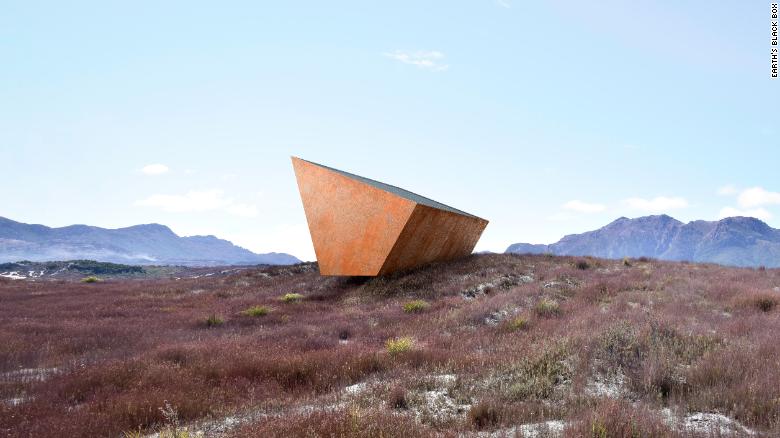
A giant » Earth’s Black Box» in the Australian state of Tasmania is a city bus-sized structure indestructible to the climate crisis itself and is meant to outlive humans.
(CNN)-Every time new climate research is published, news headlines are posted or tweets are shared, a giant steel box perched on a granite plain in the Australian state of Tasmania will be recording it all.


With its thick steel walls, battery storage and solar panels, the developers of «Earth’s Black Box» say the city bus-sized structure will be indestructible to the climate crisis itself and is meant to outlive humans.
Its creators hope, the black box will tell future civilizations how humankind created the climate crisis, and how we failed or succeeded to address it.
While the box’s construction won’t yet be completed until next year, hard drives have already begun recording algorithm-based findings and conversations since the COP-26 in Glasgow, Scotland, in November.
The steel monolith will document all climate-related conversations and artifacts from the past, present and future including land and sea temperature changes, ocean acidification, the amount of greenhouse gas in the atmosphere, human population, energy consumption, military spending, policy changes and more.
According to its makers, the box will be packed with storage drives and will constantly be downloading scientific data from the internet, which will be powered by the structure’s solar panels and battery storage.
Developers estimate the black box has the capacity to store enough data for the next three to five decades, and are continuing its research to grow its storage capabilities beyond story archiving and data compression.
Сreators are still trying to figure out who would be able to use the box in the far-off future, since gaining access to it is designed to be difficult and would require advanced technologies.
Once the black box is activated, the library of climate data will become accessible through an online platform.
Visitors will also be able to wirelessly connect to the box, which will be located at a remote site between Strahan and Queenstown in Tasmania.
Source: CNN, 7/12/2021
Last Updated on 08.12.2021 by iskova

